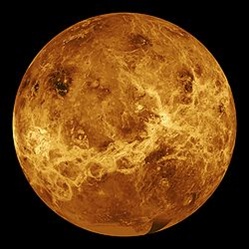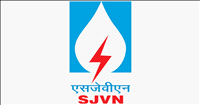HAVOC: Venus better for settlement than Mars, says NASA
23 Dec 2014
Men are from Mars, goes the old saying, and women from Venus. But incidentally appropriate to modern gender perceptions, space scientists have found that both men and women would be more comfortable with Venus.
 Why bother with the frigid, inhospitable Mars when the planet Venus is much closer to earth and also much more hospitable? This is what several space exploration agencies, led by America's NASA, are asking as they posit a project that envisions a future where humans might live in solar-powered airships just above earth's nearest neighbour.
Why bother with the frigid, inhospitable Mars when the planet Venus is much closer to earth and also much more hospitable? This is what several space exploration agencies, led by America's NASA, are asking as they posit a project that envisions a future where humans might live in solar-powered airships just above earth's nearest neighbour.
Venus is much closer to us than Mars, at a distance that ranges between 38 million km and 261 million km, compared to Mars's 56 million to 401 million km, and it is earth's closest neighbour.
It's also comparable in size to earth, with a radius of 6,052km to Earth's 6,371, and has similar density and chemical composition.
Dubbed the High Altitude Venus Operational Concept (HAVOC), the NASA project would first send a robotic scout to gauge the lay of the land (or clouds) followed by a 30-day manned mission in a zeppelin-style helium ship.
Someday, a 'city' comprising multiple space zeppelins might hover above Venus at a sweet spot where temperatures are around 167 degrees F, according to IEEE.com.
That may sound hot, but at only 17 degrees Fahrenheit hotter than earth's highest recorded temperature it's downright cosy compared to the -81F chills on the surface of Mars.
That's at 30 miles above Venus only, of course. Thanks to a greenhouse-gas heavy atmosphere, Venus is the hottest planet in the solar system with surface temperatures reaching 863F.
Dale Arney, who helped dream up the idea with Chris Jones at NASA's Systems Analysis and Concepts Directorate at Langley Research Center in Virginia, said, ''The vast majority of people, when they hear the idea of going to Venus and exploring, think of the surface, where it's hot enough to melt lead and the pressure is the same as if you were almost a mile underneath the ocean.
''I think that not many people have gone and looked at the relatively much more hospitable atmosphere and how you might tackle operating there for a while.''
The ambitious project would take a spacecraft carrying folded up helium airships to the planet where surface temperatures reach nearly 900 degree F. However, at 31 miles above Venus, scientists say the conditions are far more Earth-like.
Scientists at NASA say that in some ways a 'landing' in the atmosphere of Venus would be easier than a surface landing on Mars. A manned mission could place two astronauts above the Venusian surface for 30 days after a 110-day trip.
Once implemented, HAVOC would begin with an unmanned mission to Venus in which a 100-foot-long robotic solar-powered helium airship would test the waters, so to speak, in the planet's atmosphere.
A gondola beneath would contain instruments with which to take measurements of temperature and other factors in preparation for a manned mission.
If given the go-ahead, that manned mission would take two astronauts on a 110-day trip to Venus. They would spend a month inside a habitat in a gondola below the airship.
At the end of the 30-day mission, the astronauts would ascend back through the atmosphere in a vehicle brought with them for that purpose. The trip back would take 300 days, putting the astronauts back on Earth after 440 days.
In comparison, a very optimistic mission to Mars - which is 33.9 million miles from Earth at its closest versus 25 million for Venus - would have astronauts in space a minimum of 500 days for a stay of the same length.
The next step would be a year-long mission to Venus' atmosphere and then, in the more distant future, a permanent human settlement comprising of a floating city of airships.
Jones says the atmosphere above Venus is 'probably the most earth-like environment that's out there' and says its protection from the sun's radiation makes it almost preferable to Mars, which gets 40 times the amount of radiation as Earth.
In the Venus atmosphere, Jones says, you'd be exposed to ''about the same (temperatures) as if you were in Canada.''
For all the obstacles involved in a plan to get to Venus, stay a while and then return, Jones says it might actually be more practical than a trip to Mars.
'Venus has value as a destination in and of itself for exploration and colonization. ''There are things that you would need to do for a Mars mission, but we see a little easier path through Venus,'' HAVOC scientists said.






























